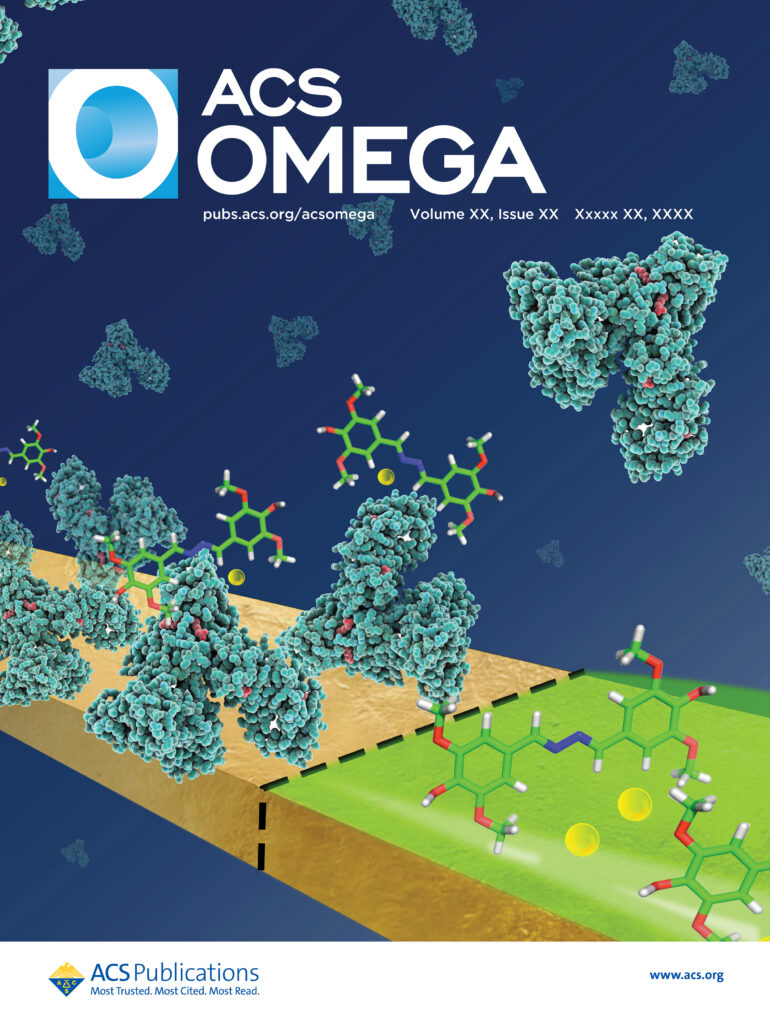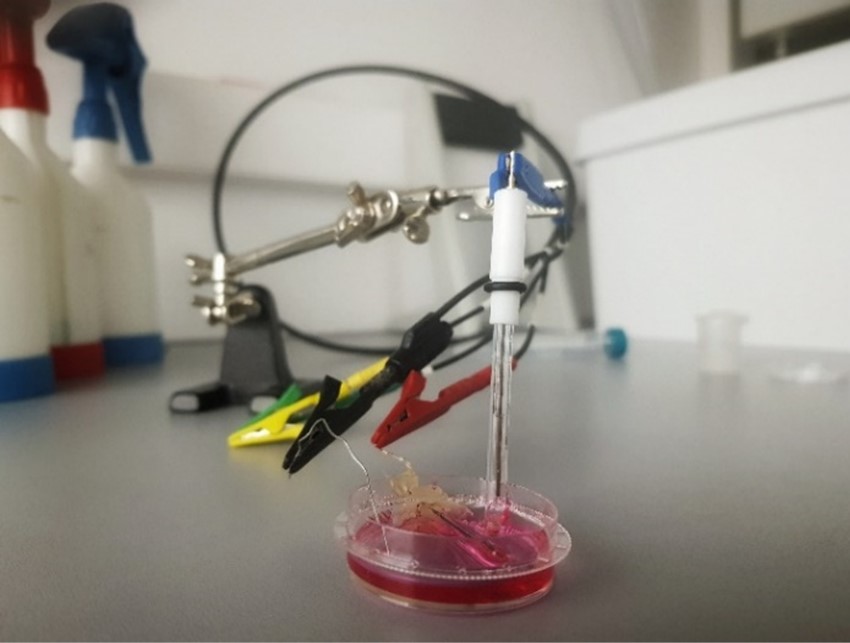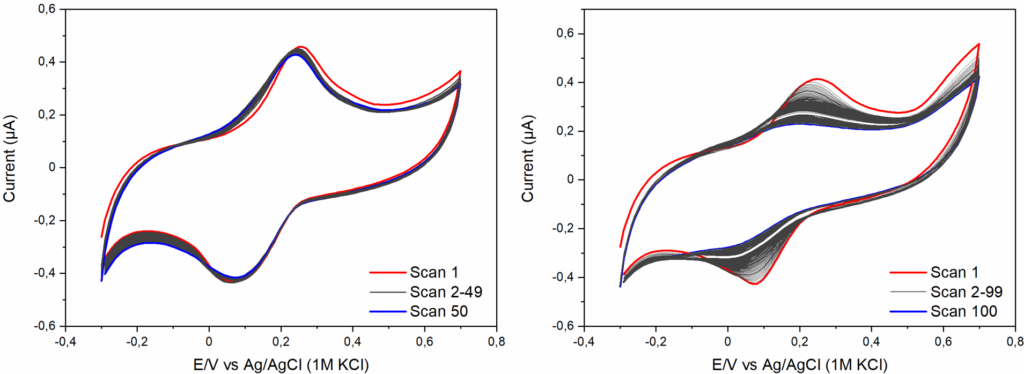Elżbieta’s publication “Methods of Protection of Electrochemical Sensors against Biofouling in Cell Culture Applications” was recently accepted in ACS Omega. The article concerns various methods of antifouling coating for electrochemical sensors, especially applied to monitor vital culture parameters in cell cultures. The publication was featured on the main cover of the journal.
The work was started by Emilia’s master’s student – Zuzia, who performed many experiments with different antifouling layers, including porous materials, permselective membranes, hydrogels, silicate sol-gels, and proteins. They were tested against a cell culture medium for three weeks. For the evaluation, a redox mediator was used, which was adsorbed on the carbon electrode surface, allowing for testing of not only the protective effect of the antifouling modification but also its impact on the catalyst itself.
Elżbieta continued it and studied the impact of selected materials (TMOS, PLLA, PLL−PEG) in HeLa cell culture. We noticed that, as expected, the first hours of incubation in cell culture were crucial for the performance of the electrodes. Although significantly reduced, during an experiment lasting three weeks, signals could be maintained for prolonged incubation in a cell culture medium. They did not influence the performance of the tested catalyst.

We successfully achieved six weeks of protection for the sensors provided by the Tetramethoxysilane (TMOS) layer silicate matrix. This type of protective layer will allow electrochemical sensors to make long-term measurements in real-time in-vitro analysis. Therefore, we could monitor crucial parameters in the cell culture environment. Glucose, oxygen, or lactate, the consumption rate, provides information on cell viability and can be translated to the toxicity tests of new drugs.
Findings from the NCBR LIDER/38/0138/L-9/17/NCBR/2018 project.




